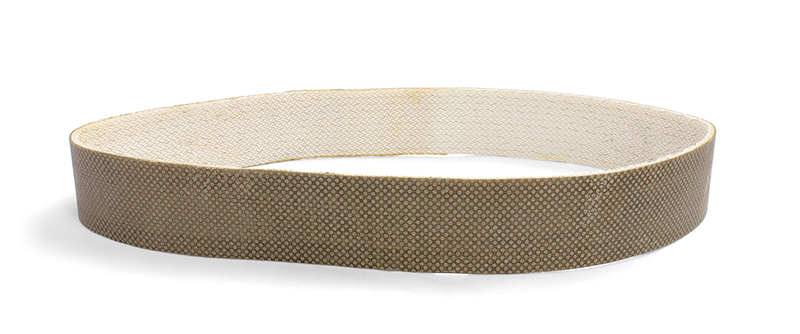
Proper maintenance of sanding belts is very important to ensure their longevity and performance in wet weather conditions. Whether you’re using them for woodworking or metalworking, following these guidelines will help you maintain the quality of your sanding belts, even in wet conditions.
Do not open the product packaging until you are sure to use it. One of the most critical steps in maintaining the integrity of your abrasive belts is to keep them in their original packaging until you are ready to use them. Packaging is designed to protect the sanding belt from moisture and other elements that may affect its effectiveness. If the sanding belt has been taken out of the packaging, the sanding belt must be completely removed from the moisture-proof packaging to avoid uneven moisture on the same sanding belt.
If for some reason you have unpacked and removed the sanding belt, make sure to remove it completely from its moisture-proof packaging. This will prevent uneven distribution of moisture on the belt, which can cause damage or loss of efficiency.
If the sanding belt has been removed from the packaging, it needs to be hung horizontally. If it is placed directly on the ground, the humidity of the upper and lower parts of the abrasive belt will be very different. When the sanding belt is out of the package, it is critical to hang it horizontally and not directly on the ground. Placing them on the ground can cause uneven moisture distribution as there will be significant differences between the upper and lower parts of the sanding belt. Hanging them horizontally will help keep moisture levels consistent across the sanding belt. Sufficient space must be left for the sanding belts to hang to avoid friction between the belts and causing abrasive wear or other abrasive damage.
When hanging horizontally, be sure to leave enough room for the belt to hang. This will prevent any friction between the sanding belts that could cause abrasive wear or other forms of damage. By providing enough space, you can ensure that the sanding belt will stay in good condition for longer.
Do not hang sanding belts on the wall near a window. Avoid hanging sanding belts on a wall near a window. Direct sunlight can cause excessive heat and humidity that can damage the sanding belt. Find a storage area away from direct sunlight to preserve the integrity of the sanding belt.
The correct storage temperature is 15-25 degrees, which can ensure the shape and performance of the product. Maintaining the correct storage temperature is critical to maintaining the shape and performance of the sanding belt. Ideally, the temperature in the storage area should be between 15 and 25 degrees Celsius. Extreme temperatures, whether they are too hot or too cold, can negatively affect sanding belts, resulting in reduced performance.
Do not expose the sanding belt to direct sunlight when it is damp. If the sanding belt gets wet, it’s important not to expose it to direct sunlight. Direct sunlight can cause overdrying, which can cause the straps to crack or become brittle. Instead, allow the leash to air dry in a cool, cool place before storing it properly.
Sanding belts cannot be stored where there is a heat source. Avoid storing sanding belts in areas with heat sources, such as near heaters or radiators. High temperatures can cause the sanding belt to degrade or lose its effectiveness. Choose a storage location that is well-ventilated and away from any potential sources of heat.
By following these guidelines for proper storage, you can ensure good abrasive performance and long life for your sanding belts. Caring for your sanding belt in wet weather conditions will help maintain its quality, allowing for optimal performance in projects such as glassworking or metalworking. Remember that proper storage is critical to reducing failure and maximizing the life of your sanding belt.
Post time: Sep-08-2023
